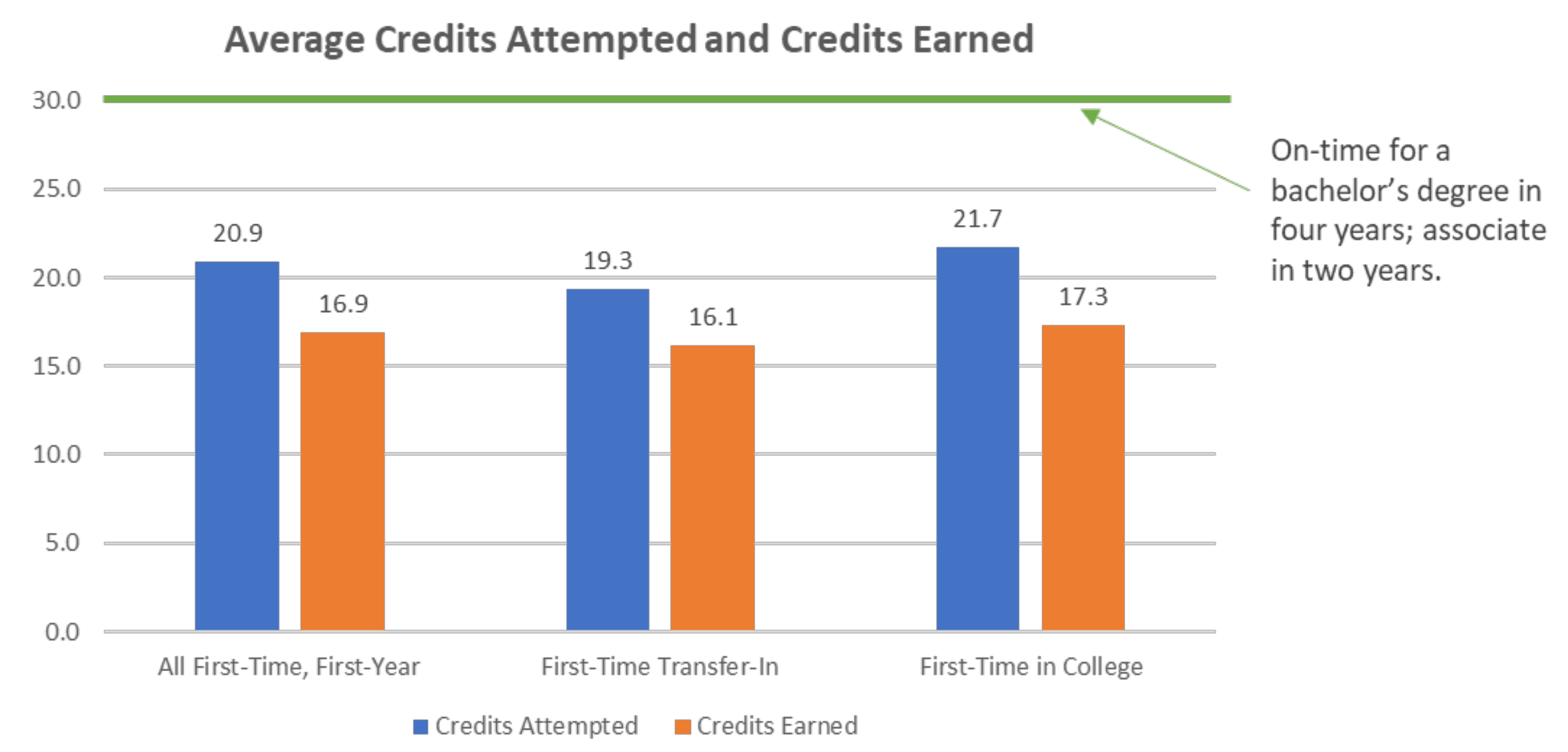- BLOG HOME
- »
- Research Services
- »
- On Average, Students Not on Track to Complete College in 5 Years

On Average, Students Not on Track to Complete College in 5 Years
On average, a full-time student does not attempt enough credits to complete a bachelor’s degree within four years or earn enough credits to complete a bachelor’s degree within five years, according to the Postsecondary Data Partnership (PDP) Insights Report by the National Student Clearinghouse Research Center.
“This is the first ever report from the National Student Clearinghouse Research Center that uses actual credit information and focuses on early momentum metrics such as first-year credit accumulation rate and credit completion ratio,” said Dr. Afet Dundar, Director, Equity in Research and Analytics at the National Student Clearinghouse Research Center and one of the authors of the report. “College and university administrators and practitioners can use these metrics to design effective and timely support for those students who need it the most, while students are still enrolled. Otherwise, students will continue to fall behind academically and financially by not completing college as soon as possible.”
The 2022 PDP Insights report focuses on two primary metrics: students’ first-year credit completion ratio (CCR) and credit accumulation rate (CAR). The CCR is the ratio of credits earned to credits attempted. The CAR measures students’ timely accumulation of college credits by identifying what share of students surpassed specific credit-hour thresholds within a given period.
Other key findings include:
- Only 51% of full-time students earned 24 or more credit hours in their first year. Less than a third (28%) earned 30 or more hours of credit. The average full-time student does not even attempt enough credits to complete a bachelor’s degree in four years. Across their first year of study, the average full-time student attempted fewer than 27 credits and earned fewer than 22.
- Students earn roughly 75% of the credits they attempt, on average, students earn nine credit hours for every 12 credits they attempt. However, this rate varies widely by race/ethnicity, enrollment intensity, college readiness, the degree sought, and institutional type. For example, Black males earn the equivalent of one 3-credit hour course less than their White and Asian peers across their first year of study.
- The largest gaps between students attempting and earning credits are across dimensions of gender, race/ethnicity, and enrollment intensity. For example, among women, the percent of Asian students who earned 30 or more credits in their first year was more than double the share of their Black/African American and Native Hawaiian or Other Pacific Islander peers.
- Adult learners (over age 24) realized consistently lower CARs and CCRs in their first year compared to their younger counterparts, even after considering enrollment intensity.
The Postsecondary Data Partnership empowers institutions with more comprehensive data, easier analysis, and better visual representations to help you understand, improve, and communicate student momentum, outcomes, and equity.

“College and university administrators and practitioners can use these metrics to design effective and timely support for those students who need it the most, while students are still enrolled.”
Dr. Afet Dundar
Director, Equity in Research and Analytics, National Student Clearinghouse Research Center
Additional Resources:



